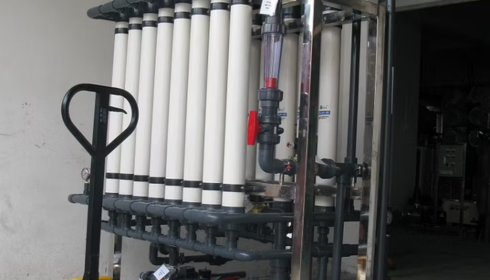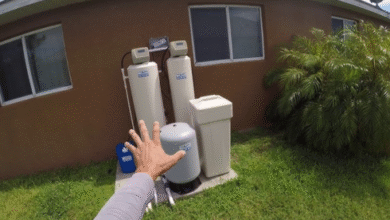Iron in Your Water? Here’s How Kingston Homes Are Solving the Rusty Water Problem for Good

If you’ve ever poured yourself a glass of tap water and paused—eyebrows raised at that yellow-orange hue—you’re definitely not alone. In Kingston, WA, iron in household water is a more common problem than many people realize. Whether you’re on a well system or pulling from older pipes, that unpleasant rusty tinge and metallic taste are telltale signs something’s up.
Iron in water may not be immediately harmful to your health, but it sure isn’t pleasant—and over time, it can take a toll on your plumbing, appliances, and peace of mind. The real question is: what’s causing it, and how do you fix it?
Spoiler: It all starts with a proper water test iron Kingston residents can rely on. And from there? You’ve got options. Good ones.
First Things First: Why Is There Iron in My Water?
In a nutshell? Because water has a knack for carrying things with it. If your home relies on a private well, groundwater picks up iron from rocks and soil as it flows. On the other hand, if you’re connected to aging municipal infrastructure, you could be getting iron from rusty pipes—especially galvanized ones that corrode over time.
There are two types of iron to know about:
- Ferrous iron (invisible when dissolved, but shows up later when it oxidizes)
- Ferric iron (already oxidized and visible—aka the rust color in your toilet bowl)
Some unlucky folks even get a double dose of both. Add in a little sulfur or manganese, and now your water might also smell like rotten eggs. Delightful, right?
What Does Iron in Water Really Do?
Aside from turning your glass of water into something that looks better suited for a mechanics’ shop, iron causes all sorts of everyday issues:
- Stains: On sinks, tubs, toilets, and even laundry.
- Clogs: Iron sludge can build up in pipes and fixtures, reducing water flow and damaging appliances.
- Taste and Smell: Metallic flavors and occasional funk make cooking and drinking a bit of a gamble.
- Wear and Tear: Water heaters, dishwashers, and washing machines can wear out faster with iron buildup.
And once the stains set in? They’re a nightmare to clean.
Water Testing: The Most Underrated First Step
Before you go out and buy some random filter off the internet, do yourself a favor and get your water tested. A professional water test iron Kingston specialists provide can tell you exactly what you’re dealing with—how much iron, what kind, and whether there are other troublemakers like manganese or bacteria tagging along.
It’s fast, it’s often free or low-cost, and it gives you the facts you need to solve the problem—not just put a bandage on it.
Finding the Right Rust Color Water Solution
Once you’ve got your test results, the fix becomes a whole lot clearer. And the good news? There’s a filter or system for just about every kind of iron problem out there.
Some of the most effective solutions include:
- Air injection oxidation systems – Great for ferrous iron, turning it into particles that can be filtered out.
- Greensand or Birm filters – Ideal for ferric iron, often used with a chemical oxidizer.
- Multi-stage filtration systems – These can handle iron plus sulfur, manganese, and other minerals common in well water.
- Water softeners with iron-removal capabilities – If you’re dealing with hardness and low levels of iron, this could be a two-birds-one-stone situation.
It’s all about matching the system to your unique water profile. That’s where working with local experts really pays off.
What About the Pipes?
Here’s something a lot of people forget: if your pipes are already rusted internally, new water filters won’t magically undo that. Iron deposits inside old galvanized pipes can flake off slowly over time, continuing to cause discoloration even after the water is “clean.”
That’s why part of a complete WA iron issues fix might include pipe inspection, professional flushing, or even replacing problem sections. Yes, it’s an investment—but the long-term peace of mind is worth it.
And once you’ve stopped the new iron from coming in and cleaned out what’s already there? That’s when you get truly clear, reliable water again.
Local Expertise Makes a Difference
Let’s be real: solving water problems in Kingston isn’t the same as solving them in, say, Phoenix. Local terrain, soil composition, and infrastructure all play a role. That’s why it pays to work with professionals who understand Kitsap County water inside and out.
They’ve seen the wells. They know the pipes. And they’ve read more water test reports than most of us will in a lifetime. They’ll help you find a system that works—without overcomplicating it.
Real People. Real Reviews. Real Results.
Still unsure? A scroll through local reviews can be eye-opening. Homeowners in the area who were living with rust stains and murky showers for years often describe the difference as “life-changing” once the right system is in place.
Clear water. Clean sinks. Appliances that actually last. It’s not just a luxury—it’s a return to normal.
Water test iron Kingston, rust color water solution, WA iron issues fix—these aren’t just phrases for a search engine. They’re pieces of a better, simpler life for families who are tired of second-guessing their tap water.
So if your water’s been leaving you with more questions than answers, it might be time to start fresh—with a clear test, a smart fix, and a whole lot fewer stains. Clean, safe water doesn’t need to be complicated. It just needs to start with a test—and the right help.




